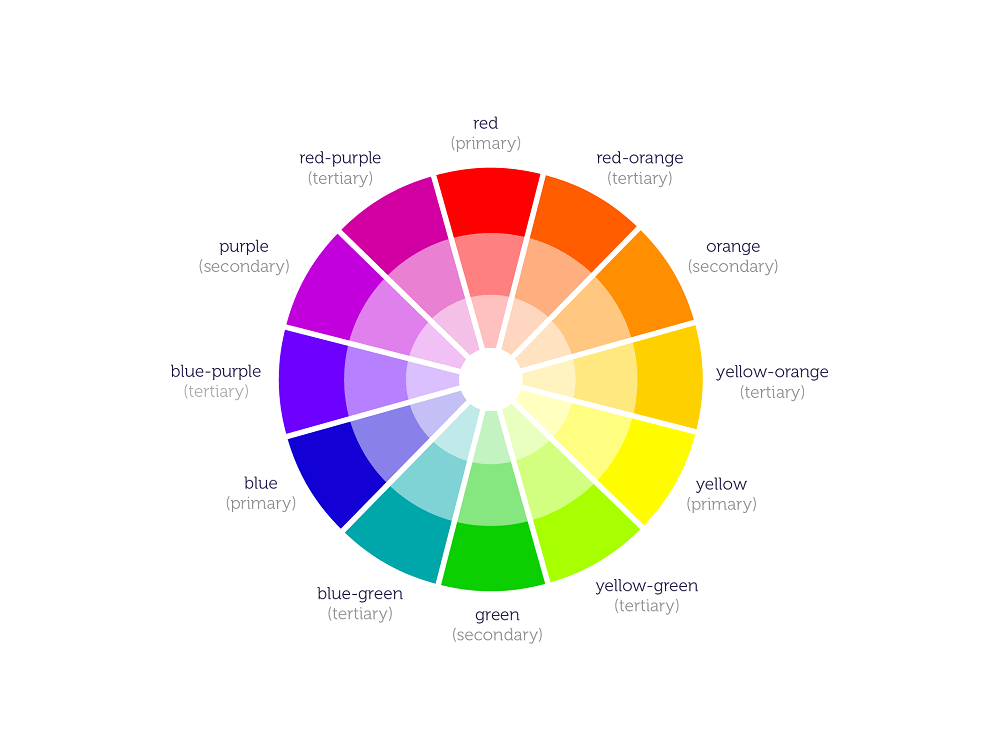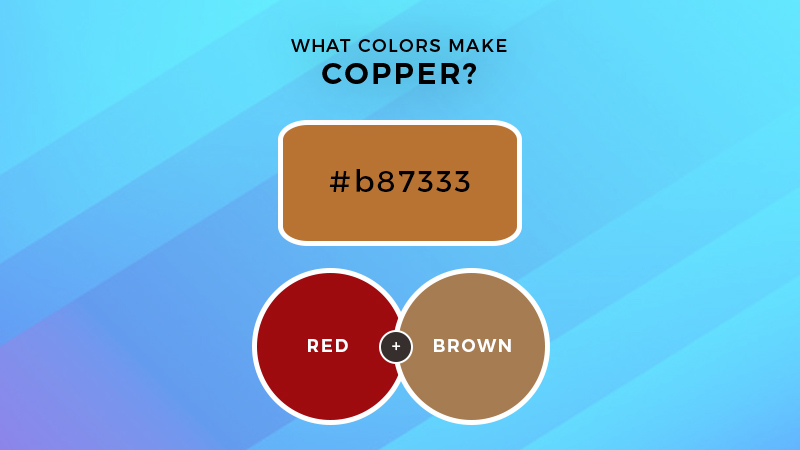What Colors Make Copper? What Two Colors Make Copper
In this article, we are going to share with you how to make the color copper.
You are probably thinking, “what colors make copper?” Maybe you’re a makeup artist or someone who loves to paint. As we explore the color wheel and color theory, we hope to enlighten you on the process of color mixing.
As you discover more about the concept of mixing colors to achieve new pigments, we will also bust some myths you’ve been taught in the past.
Keep reading…
Do you recall learning about color mixing in elementary school? Your teacher probably said primary colors cannot be made by mixing any other colors.
Myth! You can mix two to three colors to get the primary colors red, blue, and yellow.
Today, I’m going to share the colors that make copper with you. Before we go there, however, let me help you understand the color theory in more depth.
Basics of Color Theory
To get a full background on how to make copper, first, we need to look into how colors operate. In order to look at all the hues that exist, we need a color wheel. This illustration lets you visualize different color families.
The diagram shows how colors affect one another, as well as their classification. You’ll notice the basic color wheel doesn’t include copper. Artists have simplified it to include only basic hues, like David Kessler’s simple color system.
However, because we are talking about copper, let’s look at where it should sit in the color wheel.
Warm vs Cool Colors
Looking at the color wheel, you can see two major categories in terms of shades: warm and cool. Yellow, orange and red compose the bold, warm and vibrant category. These are considered warm because they represent heat and fire. These hues can become lighter or darker, depending on the colors mixed.
For instance, if you mix orange with blue or violet, darker shades of orange can be achieved, including brown. Brown is a combination of orange and blue, red and green, and yellow and violet. It looks close to copper, but copper appears much lighter and with a more orange hue.
On the other hand, cool colors seem cold, calm, and soothing. Some of the cool colors include blue, green, and purple.
At this point, we now know that copper is a warm color. That should give you a hint as to which colors you need to create it. But before we get to that, let’s discuss three other color categories you should know.
Primary Colors (Red, Blue, Yellow)
The primary colors red, blue, and yellow combine to make the set of colors called secondary colors. If you combine red and blue, you can get violet. On the other hand, if you mix blue and yellow, green is achieved. Finally, orange is a combination of red and yellow.
Essentially, primary colors serve as the base of secondary and tertiary colors. The latter is achieved by mixing both primary and secondary colors. Tertiary colors are yellow-orange, red-orange, red-violet, blue-violet, blue-green, and yellow-green.
What Colors Make Copper?
Now that we have a foundation of color theory, you might be wondering what two colors make copper.
To put it simply…
Red and brown make copper.
When you combine equal amounts of these two colors, you can create copper. In addition to this combination, you can also use brown and orange to come up with copper. Take note that copper is more on the orange side, so you will be safe with anything near red on the color wheel.
If you add a greater amount of red or orange to the mixture, accept that the result will be different. This is the beauty of color mixing: the ability to create endless results from mixing colors.
Copper In Design
When you think about the color of copper, you may picture metal, coins, wood, jewelry, or furniture. In interior design, the color can be seen in metal decor, especially in doorknobs, taps, and lighting, as well as in wooden doors or flooring. The hue is warm and it provides a sense of luxury. Aside from this, the color also indicates wealth, since most coins have this hue.
It is complementary to cool colors, especially metallic blue and green. Therefore, it provides a luxurious accent to any room.
Bottom Line
Looking at the color copper, we see how colors react with one another when creating our own mixtures. Try it on acrylic paint, watercolor, or clay, and enjoy the use of copper in your work.
We hope you’ve learned something helpful today and that you can use this knowledge for your next project.
Thanks for joining us,
Cheers!
Read Latest Posts

Hi, I'm Anthony Tran! Welcome to my site. I live in Arizona and am obsessed with all things related to building an Online Business and working from home. Learn about my journey here.
Follow Online




